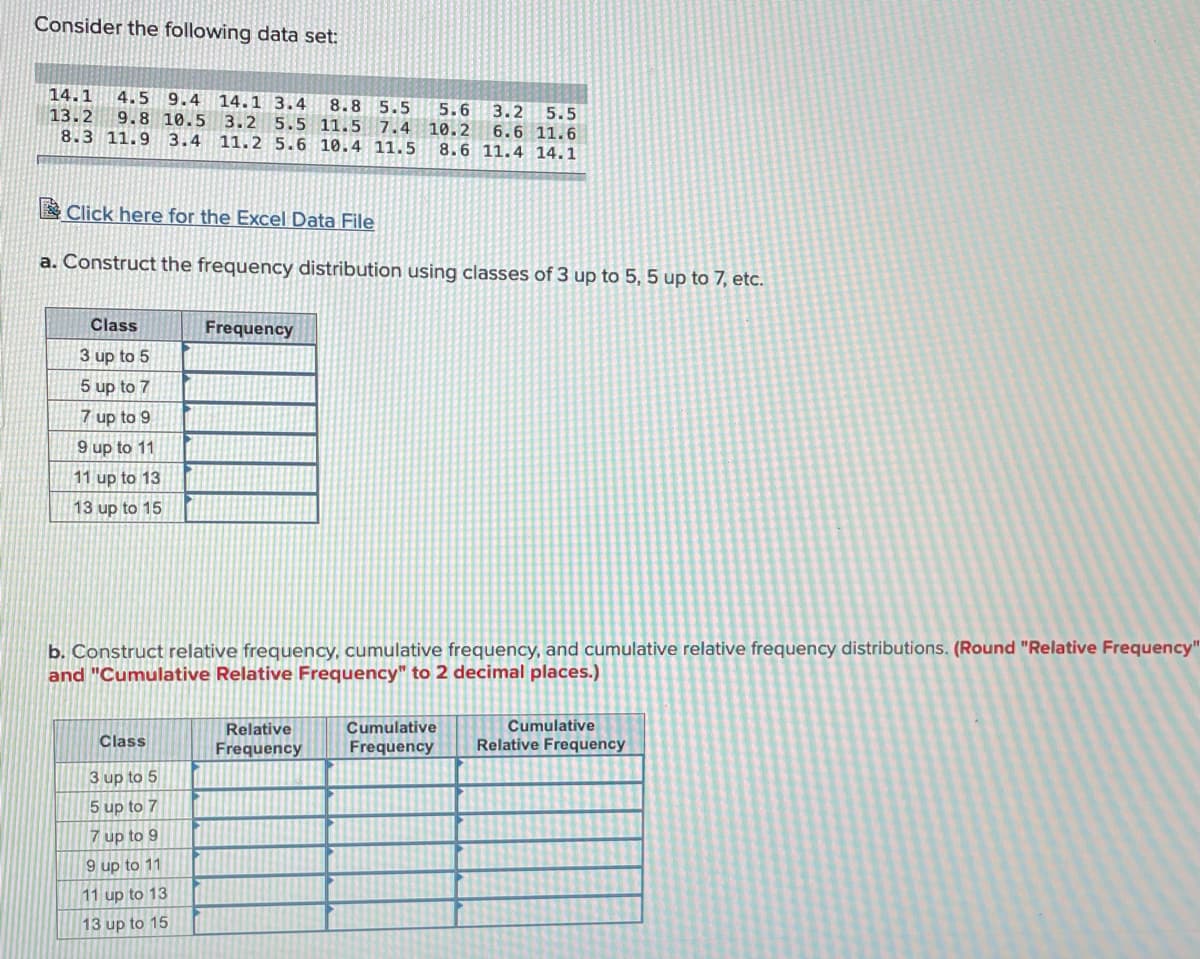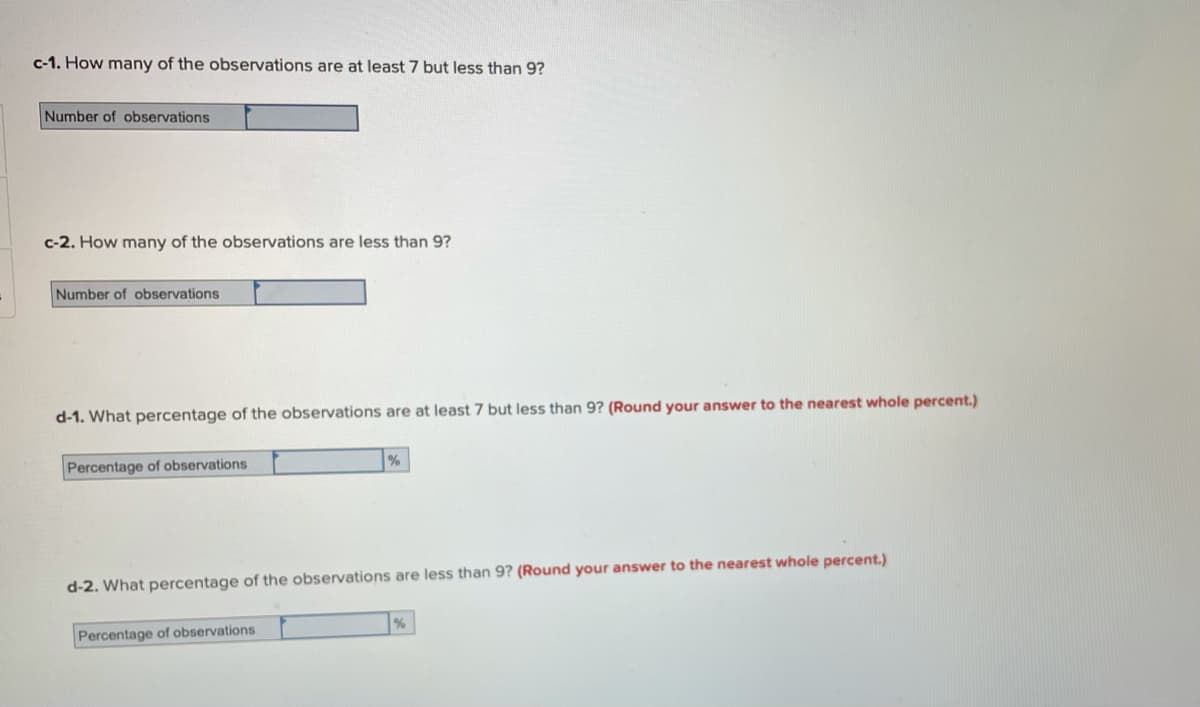Consider the following data set: 14.1 4.5 9.4 14.1 3.4 8.8 5.5 13.2 8.3 11.9 3.4 5.6 9.8 10.5 3.2 5.5 11.5 7.4 10.2 3.2 5.5 6.6 11.6 8.6 11.4 14.1 11.2 5.6 10.4 11.5 Click here for the Excel Data File a. Construct the frequency distribution using classes of 3 up to 5, 5 up to 7, etc. Class Frequency 3 up to 5 5 up to 7 7 up to 9 9 up to 11 11 up to 13 13 up to 15 b. Construct relative frequency, cumulative frequency, and cumulative relative frequency distributions. (Round "Relative Frequency" and "Cumulative Relative Frequency" to 2 decimal places.) Relative Cumulative Cumulative Class Frequency Frequency Relative Frequency 3 up to 5 5 up to 7 7 up to 9 9 up to 11 11 up to 13 13 up to 15
Inverse Normal Distribution
The method used for finding the corresponding z-critical value in a normal distribution using the known probability is said to be an inverse normal distribution. The inverse normal distribution is a continuous probability distribution with a family of two parameters.
Mean, Median, Mode
It is a descriptive summary of a data set. It can be defined by using some of the measures. The central tendencies do not provide information regarding individual data from the dataset. However, they give a summary of the data set. The central tendency or measure of central tendency is a central or typical value for a probability distribution.
Z-Scores
A z-score is a unit of measurement used in statistics to describe the position of a raw score in terms of its distance from the mean, measured with reference to standard deviation from the mean. Z-scores are useful in statistics because they allow comparison between two scores that belong to different normal distributions.


Trending now
This is a popular solution!
Step by step
Solved in 4 steps




